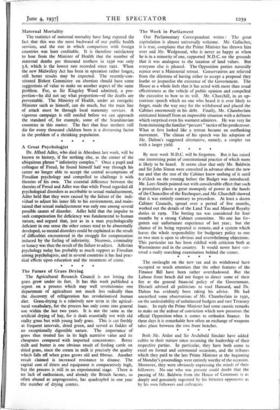The Future of Grass Drying The Agricultural Research Council is
not letting the grass grow under its feet. It has this week published a report on a process which may well revolutionise one department of agriculture not much less radically than the discovery of refrigeration has revolutionised human diet. Grass-drying is a relatively new term in the agricul- tural vocabulary, for the process has only come into general use within the last two years. It is not the same as the artificial drying of hay, for it deals essentially not with old stalky grass but with young leafy grass. This is cut freshly at frequent intervals, dried green, and served as fodder of an exceptionally digestible nature. The importance of grass thus treated lies in its high nutritive value and its cheapness compared with imported concentrates. Better milk and butter is one obvious result of feeding cattle on dried grass, since the cream in milk is precisely the quality which falls off when grass grows old and fibrous. Another result claimed is increased resistance to disease. The capital cost of driers and equipment is comparatively high, but the process is still in an experimental stage. There is no lack of enthusiasm, and already the British farmer, so often abused as unprogressive, has quadrupled in one year the number of drying centres.










































 Previous page
Previous page